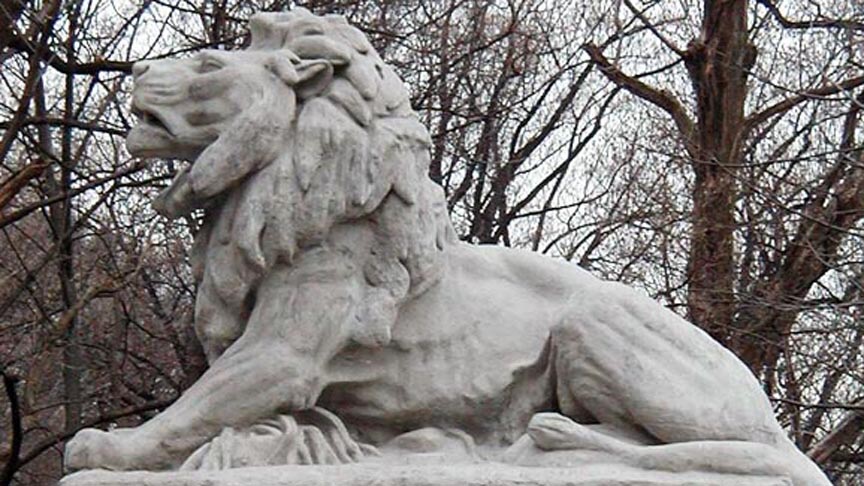The William H. Taft Memorial Bridge, on Connecticut Avenue in Washington, DC, was guarded by four majestic lion statues sculpted by Roland Hinton Perry and cast in concrete to celebrate the bridge construction.
The original lions became lost under layers of repairs and the District of Columbia elected to have new lions to replace the originals.
Working with the Fine Arts Commission and the Historic Preservation Society, Reinaldo (Professional Restoration's master sculptor) studied photos of the original lions and other pieces created by Perry. One-third scale maquettes of the lions were made adding the details that had been lost to deterioration. Full-size (12 feet long) molds were made and four new lions were cast made of engineered high-strength concrete which contained all stainless steel reinforcing.
Installation of two lions occurred in July and the remaining two were restored to their place in August, 2000. The residents of Woodley Park, who had been missing their lions since their removal in 1993, celebrated by naming one lion "Roland" after the original artist. Another lion was named "Reinaldo" for the artist who had restored the statue's original majesty and beauty.
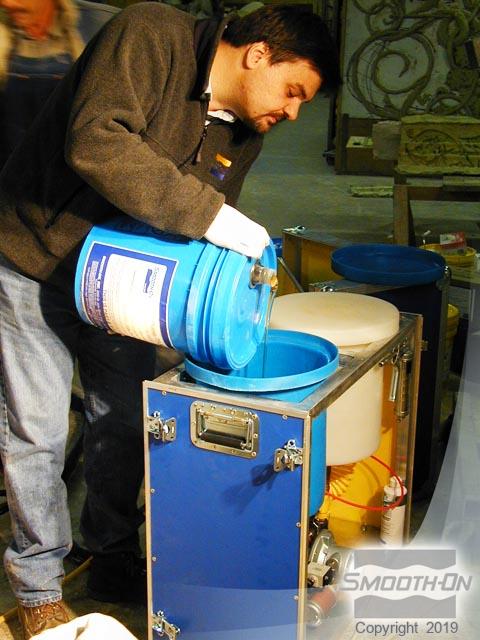 2 part Smooth-On sprayable mold material is poured into the spray machine.
2 part Smooth-On sprayable mold material is poured into the spray machine.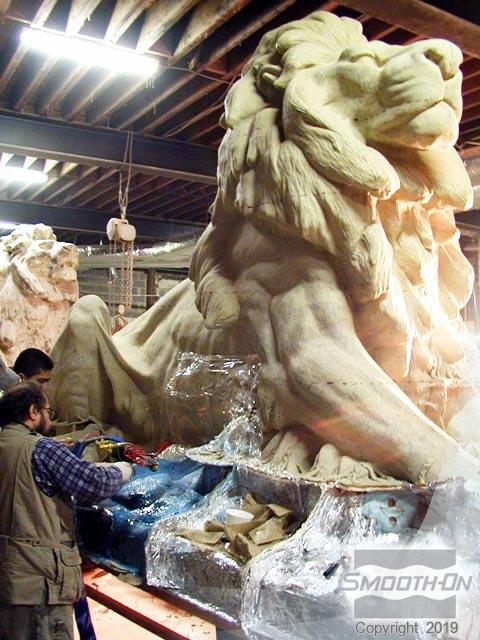 Material is sprayed in sections
Material is sprayed in sections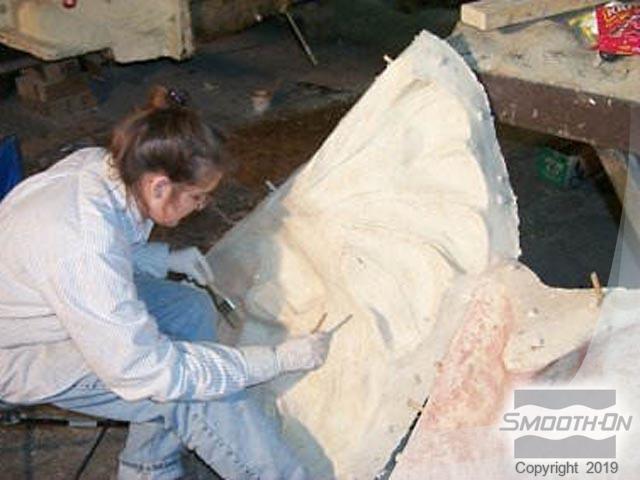 Melissa Smith, artist, preparing one of the large rubber mold sections prior to assembly. Each section included a flanged rigid jacket of SmoothOn Plasti-Paste®.
Melissa Smith, artist, preparing one of the large rubber mold sections prior to assembly. Each section included a flanged rigid jacket of SmoothOn Plasti-Paste®.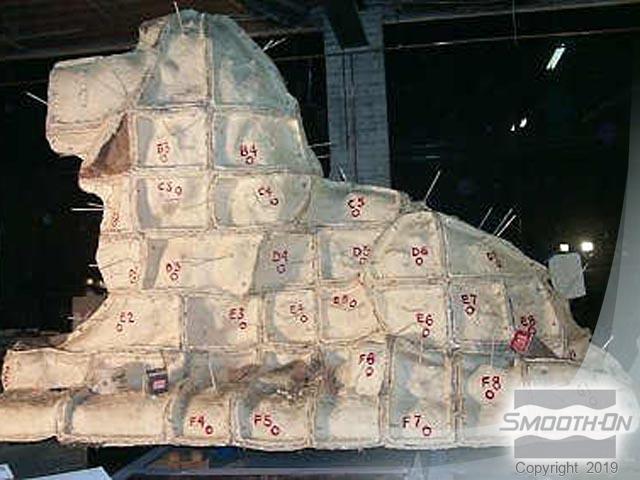 An assembled mold. Each lion's mold was comprised of more than 80 individual pieces. Each piece was numbered to allow dismantling for transport from the shop to the casting yard.
An assembled mold. Each lion's mold was comprised of more than 80 individual pieces. Each piece was numbered to allow dismantling for transport from the shop to the casting yard.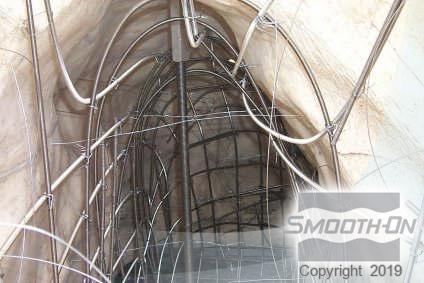 At the casting yard, the molds were reassembled and stainless steel reinforcing was shaped and installed within the mold. The large vertical rod is one of two 1 inch diameter rods cast into each lion for lifting.
At the casting yard, the molds were reassembled and stainless steel reinforcing was shaped and installed within the mold. The large vertical rod is one of two 1 inch diameter rods cast into each lion for lifting.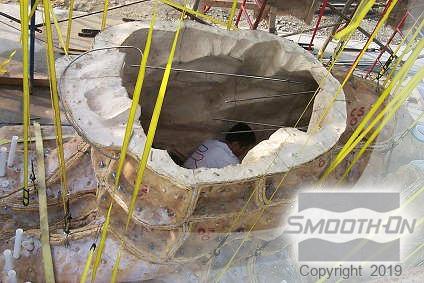 A nimble craftsman works within the mold to measure, shape, and install the stainless steel reinforcing.
A nimble craftsman works within the mold to measure, shape, and install the stainless steel reinforcing.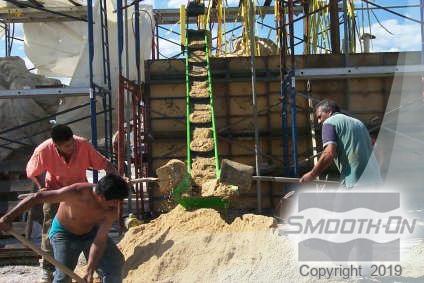 To balance the pressure caused by 32,000 pounds (16 tons) of fresh concrete, Reinaldo constructed a box around the mold which was filled with sand.
To balance the pressure caused by 32,000 pounds (16 tons) of fresh concrete, Reinaldo constructed a box around the mold which was filled with sand.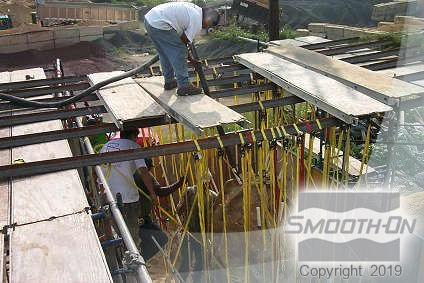 Once the mold was ready, high-strength concrete was dispensed. When the concrete was placed within the mold, there was enough pressure to displace the entire sandbox with its 80,000 pounds (40 tons) of sand.
Once the mold was ready, high-strength concrete was dispensed. When the concrete was placed within the mold, there was enough pressure to displace the entire sandbox with its 80,000 pounds (40 tons) of sand.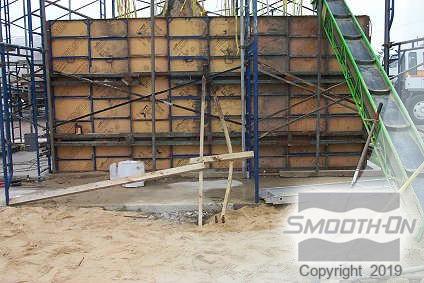 View of the large support structure
View of the large support structure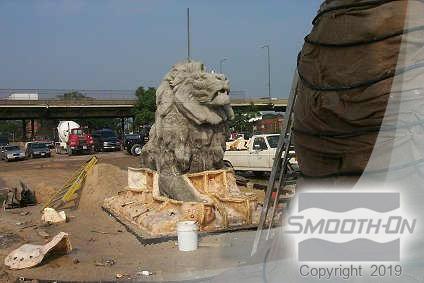 The mold being removed after casting. Each lion was then damp-cured for two weeks wrapped in burlap with a 'trickle' hose on a timer.
The mold being removed after casting. Each lion was then damp-cured for two weeks wrapped in burlap with a 'trickle' hose on a timer.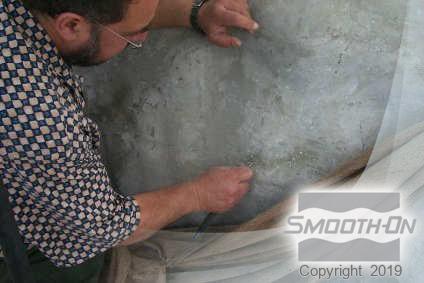 After the two-week damp-curing process, Reinaldo worked to remove casting flash from the mold seams.
After the two-week damp-curing process, Reinaldo worked to remove casting flash from the mold seams.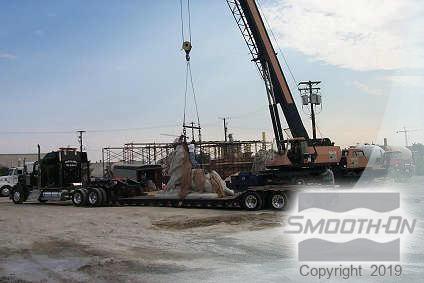 At the bridge, the lions were hoisted onto their pedestals using a 60-ton crane. The residents came out onto the street to welcome back their long-missed 'guardians.'
At the bridge, the lions were hoisted onto their pedestals using a 60-ton crane. The residents came out onto the street to welcome back their long-missed 'guardians.'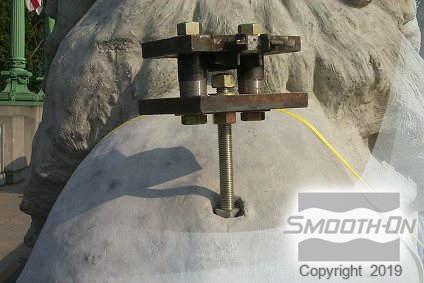 To hoist the lions, Reinaldo cast two 1 inch diameter stainless steel rods secured to the self-base of each lion. A custom-machined stainless steel coupling nut just below the surface allowed attachment of the engineered lifting hardware.
To hoist the lions, Reinaldo cast two 1 inch diameter stainless steel rods secured to the self-base of each lion. A custom-machined stainless steel coupling nut just below the surface allowed attachment of the engineered lifting hardware.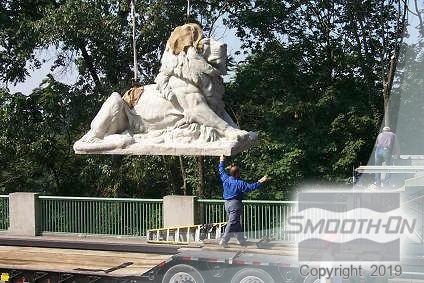 Reinaldo guides one of the 16-ton lions from the tractor-trailer to its pedestal. The cast-in lifting hardware allowed the lion to be rigged for hoisting from the top while transferring all the stress through the lion to the base.
Reinaldo guides one of the 16-ton lions from the tractor-trailer to its pedestal. The cast-in lifting hardware allowed the lion to be rigged for hoisting from the top while transferring all the stress through the lion to the base.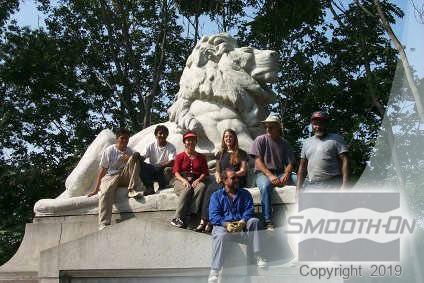 Reinaldo (in blue), Patricia Ghiglino (in red), President of Professional Restoration, and their crew after installation of the fourth Taft Bridge Lion. Between research, modeling, and casting the entire project took 19 months.
Reinaldo (in blue), Patricia Ghiglino (in red), President of Professional Restoration, and their crew after installation of the fourth Taft Bridge Lion. Between research, modeling, and casting the entire project took 19 months.
